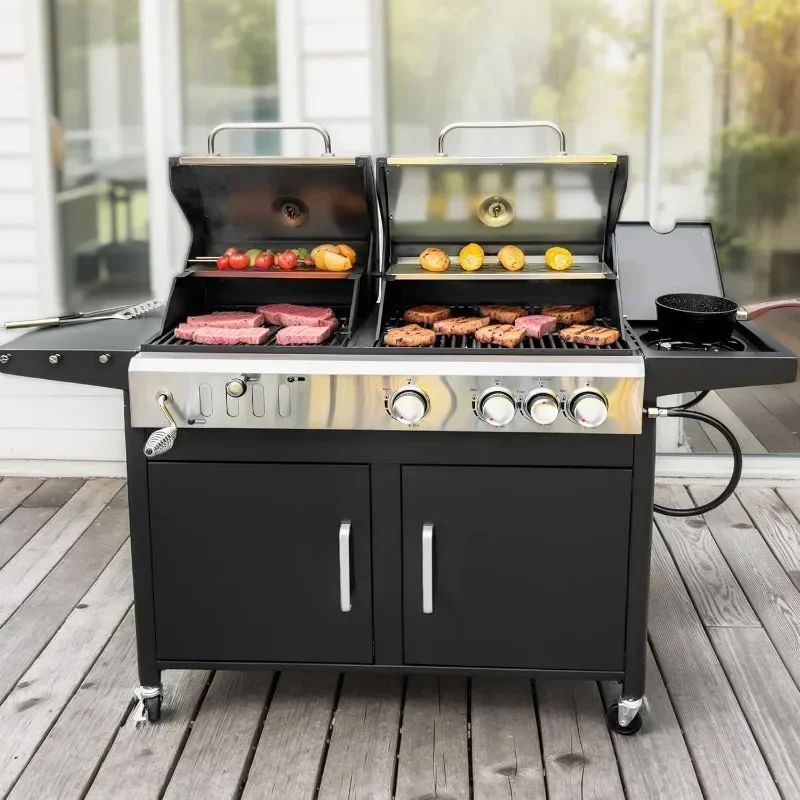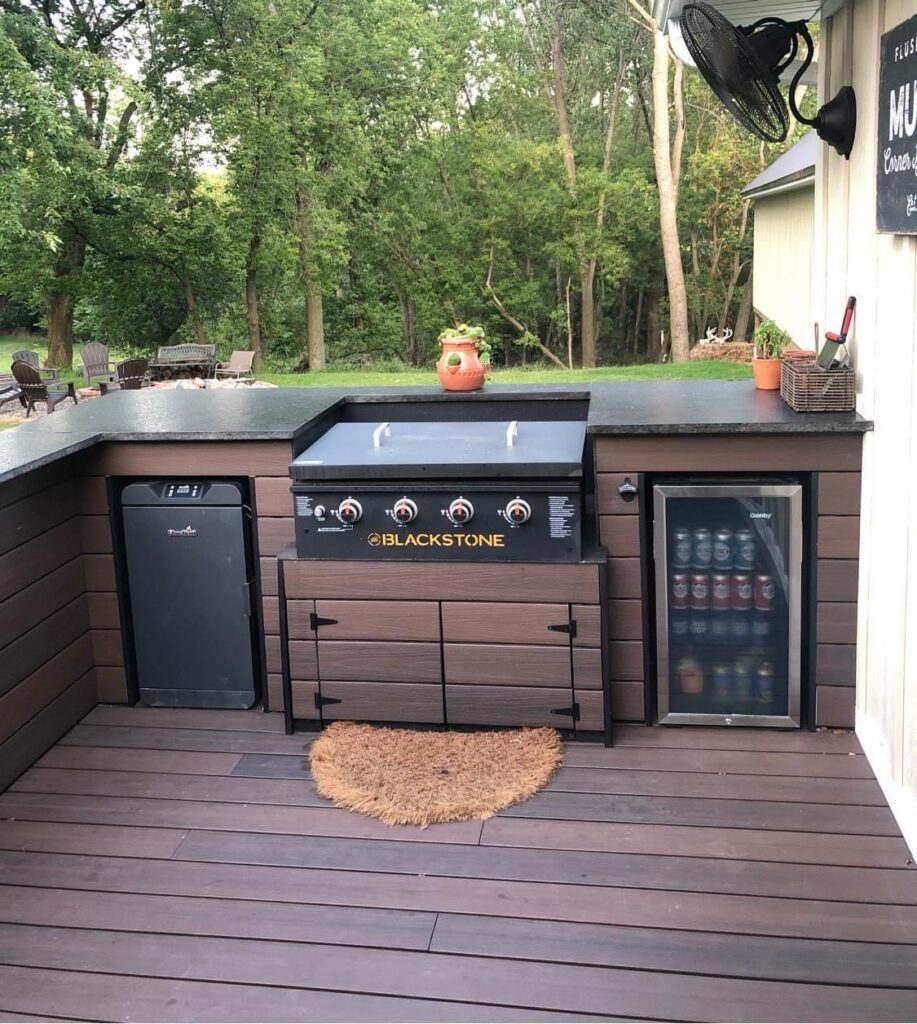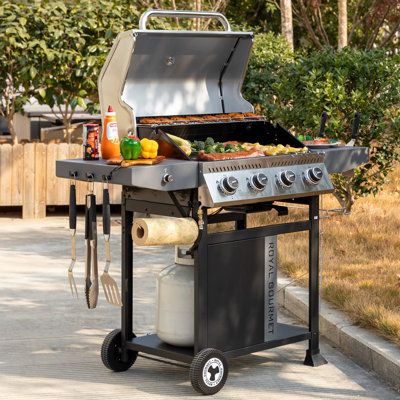You are ready to design your outdoor kitchen. The last step is choosing the grill. This is not just a purchase. It is a choice that shapes every meal and gathering. Many buyers struggle because there are so many grill types, fuel options, and features.
A built-in gas grill offers strong performance, reliable cooking, and seamless style for outdoor kitchens. Choosing the right model depends on size, materials, features, installation, and budget.
If you want a grill that matches your cooking style and lasts many years, you need to know what to look for. The next sections will guide you through the main questions buyers ask, from durability to installation, to help you make a confident choice.
What are the benefits of built-in gas grills?
A built-in gas grill changes how you cook and how you enjoy your outdoor space. Many people wonder why they should invest in a built-in instead of a freestanding model. The answer lies in convenience, style, and function.
Built-in gas grills save space, add value to outdoor kitchens, and deliver steady heat for consistent cooking. They create a permanent cooking station that blends into your patio or backyard design.
When we think about benefits, we need to look at both cooking and lifestyle. Built-in grills are easy to use. They start with one click. They give steady heat that is simple to control. You do not need to move them around or worry about storage. They also look professional. Guests see a complete outdoor kitchen, not a loose appliance on wheels.
Key benefits to consider
- Seamless integration into outdoor kitchens
- Stable fuel supply with natural gas hook-up
- Long-term investment that raises property value
- Better cooking space management compared to portable grills
| Benefit | Built-In Gas Grill | Freestanding Grill |
|---|---|---|
| Space efficiency | High | Medium |
| Heat control | Precise | Good |
| Lifespan | Long | Medium |
| Adds home value | Yes | No |

Another point is resale value. A built-in kitchen with a gas grill often makes a house more attractive to buyers. Families see it as an extension of the home. That means the investment is not just for now. It pays off later as well.
How to choose the right grill size?
Grill size matters more than many buyers think. Too small and you cannot host family gatherings. Too big and you waste fuel and space. Size is one of the first decisions to make.
Choose a built-in gas grill size based on how many people you cook for, how often you host, and the type of meals you prepare. A small 3-burner works for couples, while a 5 or 6-burner fits large gatherings.
Grill size is measured in width and cooking area. Most built-in models range from 24 to 46 inches. A 24-inch grill fits 10 burgers at once. A 36-inch grill fits 20. Bigger models often include side burners or warming racks.
Grill sizes and best uses
| Grill Size (inches) | Cooking Area (sq in) | Best For |
|---|---|---|
| 24–26 | 400–500 | Small families, couples |
| 30–32 | 600–700 | Medium gatherings |
| 36–38 | 800–1,000 | Large families, parties |
| 42–46 | 1,200+ | Big events, catering |

Think about your habits. Do you often host 2–3 friends or big family reunions? Do you cook only burgers and hotdogs, or do you try ribs, whole fish, or roast chicken? Bigger food and more guests mean more space. Remember, it is easier to use part of a large grill than to fit big meals on a small one.
Which materials last longest outdoors?
The material of your grill is as important as size. Outdoor kitchens face rain, heat, and sometimes salty air near the coast. The wrong material can rust in one season.
304 stainless steel is the gold standard for built-in gas grills. It resists rust, handles high heat, and lasts for decades outdoors. Cheaper options like 430 stainless steel or powder-coated steel may fail over time.
When comparing materials, you want to think about both cooking and weather. 304 stainless steel resists both corrosion and heat. 316 stainless steel, sometimes called marine grade, is even stronger for coastal climates but costs more.
Common grill materials
| Material | Durability | Cost Level | Best For |
|---|---|---|---|
| 304 Stainless Steel | Excellent | Medium | Most buyers, long lifespan |
| 316 Stainless Steel | Superior | High | Coastal or harsh climates |
| 430 Stainless Steel | Fair | Low | Budget grills, short lifespan |
| Powder-Coated Steel | Poor | Low | Temporary setups, not durable |

If you want your investment to last more than ten years, you cannot compromise on materials. Even if a grill looks shiny at first, cheap metals will corrode, welds will crack, and the surface will peel. A true outdoor kitchen should not need a replacement every few years.
Do built-in gas grills need special installation?
Buyers often ask if they can install a built-in grill themselves. The answer depends on the fuel and the setup.
Most built-in gas grills require professional installation, especially if you are using natural gas. The grill must connect safely to a gas line, and the island must fit the grill dimensions.
Some smaller drop-in units may be easier to set into pre-cut spaces. But a built-in gas grill is not the same as rolling a cart onto your patio. You need to plan space, ventilation, and safety.
Installation factors
- Gas line connection: natural gas requires a licensed contractor
- Ventilation: islands must have vents to avoid gas buildup
- Clearance: grills need space from walls and flammable surfaces
- Island structure: concrete or stone base is common for safety
When planning your outdoor kitchen, check the manufacturer’s cutout dimensions. A grill that does not fit properly can cause damage or unsafe cooking conditions. This is why many brands also sell matching islands. They are designed for the grill’s exact shape and venting needs.
What features improve grilling performance?
Not all built-in grills are the same. Features affect how well you cook and how easy it is to manage heat.
Important features include burners with high BTU output, heat diffusers to spread energy, precise knobs for control, and extras like rotisserie kits or infrared burners for searing.
A grill with weak burners can look nice but cook poorly. Heat diffusers, sometimes called flavorizer bars, help prevent flare-ups and keep food evenly cooked. Infrared burners let you sear steaks at restaurant quality.
Features that matter most
| Feature | Why It Matters |
|---|---|
| High BTU Burners | Strong, even heat for cooking |
| Heat Diffusers | Spread heat and prevent flare-ups |
| Rotisserie Kit | Allows slow roasting of whole meats |
| Infrared Burner | Perfect sear on steaks and chops |
| Warming Rack | Keeps food warm while others cook |
Performance features also affect fuel use. A grill with good design cooks faster and uses less gas. For example, a heavy lid keeps heat inside, so you do not waste energy.
Which fuel type works best for built-in grills?
The two main options are propane and natural gas. Each has pros and cons.
Natural gas is best for permanent outdoor kitchens because it gives endless fuel and lower cost over time. Propane is better for flexibility since tanks can be replaced or moved.
Natural gas is connected directly to your home line. Once installed, you never need to refill. It is cheaper per BTU compared to propane. Propane, however, lets you move the grill if needed.
Fuel type comparison
| Fuel Type | Pros | Cons |
|---|---|---|
| Natural Gas | Endless supply, cheaper long-term | Requires fixed connection |
| Propane | Portable, easy to find tanks | Higher cost, frequent refill |
If you want a long-term investment and already plan for an outdoor kitchen, natural gas is the clear choice. If your setup is temporary or you want to keep moving, propane is fine. Some hybrid models allow both, but they cost more.
Conclusion
A built-in gas grill is more than a cooking tool. It is part of your home, your gatherings, and your investment in outdoor living. The best model depends on how you cook, how often you host, and the climate you live in. Choose 304 stainless steel for long life. Pick the right size for your family and friends. Plan safe installation with proper ventilation. Add features that match your cooking style, from rotisserie to infrared searing. Decide on natural gas for steady supply or propane for flexibility.
By asking the right questions before you buy, you ensure your grill lasts for decades, keeps your meals delicious, and makes your outdoor kitchen the true center of your home.
Here are 8 FAQs based on Google search results and People Also Ask related to Built-In Gas Grills:
FAQ
Can you convert a propane grill to natural gas?
Yes, many built-in gas grills support conversion kits. Always check the manufacturer’s guidelines to ensure safety and proper installation.
Do built-in gas grills need ventilation?
Yes, built-in grills must have vents in the island to release gas buildup. This is critical for safety and airflow during cooking.
How long do built-in gas grills last?
A quality 304 stainless steel built-in grill lasts 10–20 years. With regular cleaning and maintenance, many owners use them for decades.
Can you use a built-in grill under a covered patio?
Yes, but only if proper ventilation and a vent hood are installed. Covered areas need airflow to prevent gas accumulation and smoke buildup.
What is the average BTU for a built-in gas grill?
Most built-in gas grills range from 40,000 to 90,000 BTUs. Higher BTUs deliver stronger heat, but even distribution matters more than raw power.
Do built-in gas grills come assembled?
Most built-in grills ship partially assembled. You may need professional help for final installation, gas connections, and fitting into the island cutout.
Are built-in gas grills more expensive than freestanding grills?
Yes, built-in grills usually cost more due to materials and design. However, they offer higher durability, performance, and long-term value.
What maintenance does a built-in gas grill require?
Regular cleaning of grates, burners, and drip trays is required. Seasonal checks for gas leaks and stainless steel polishing keep the grill in good shape.
